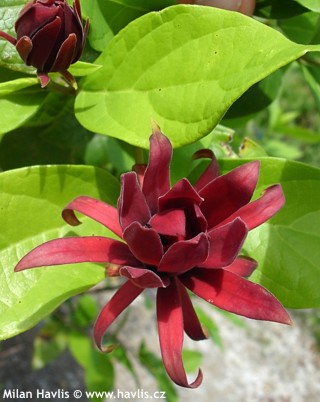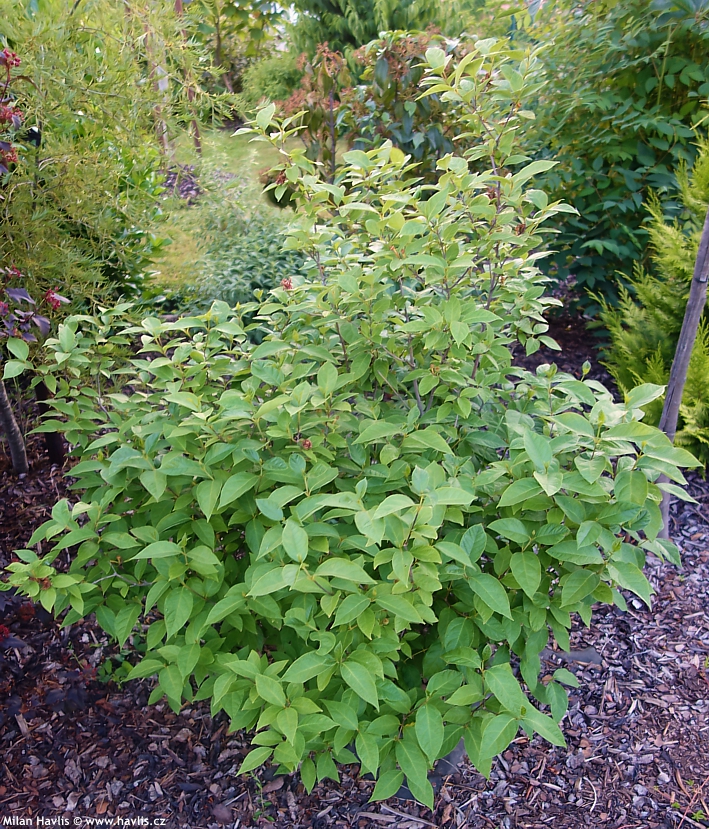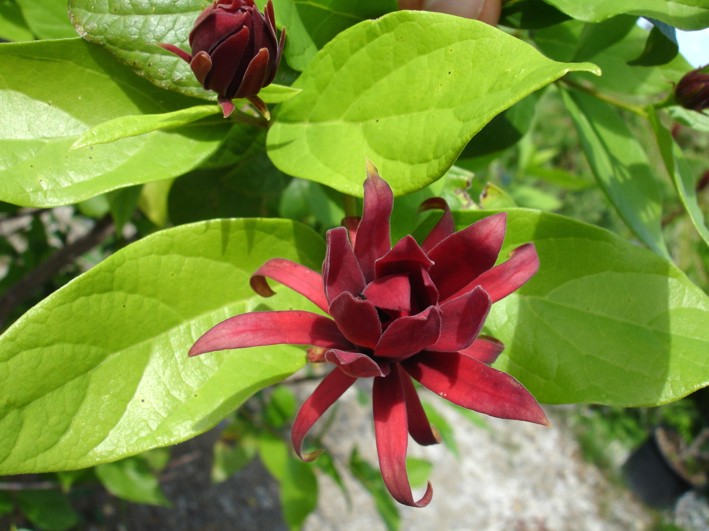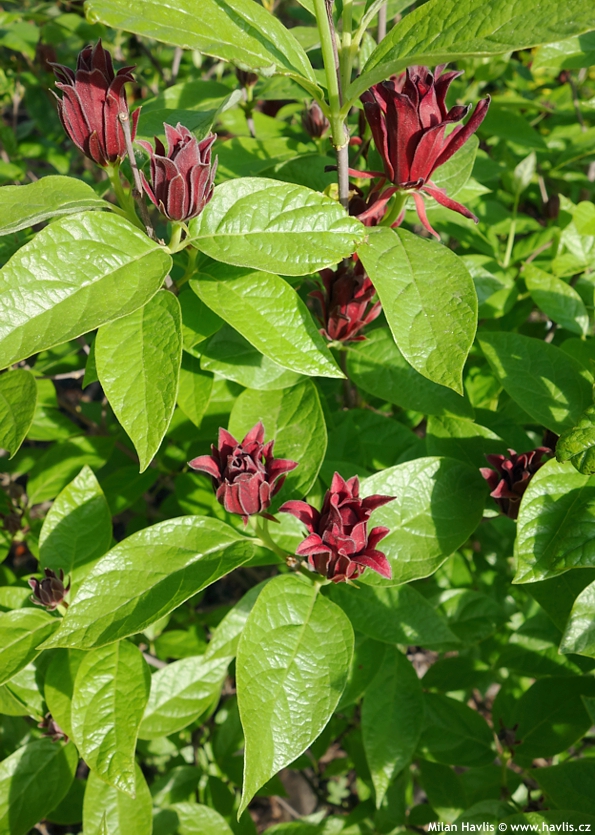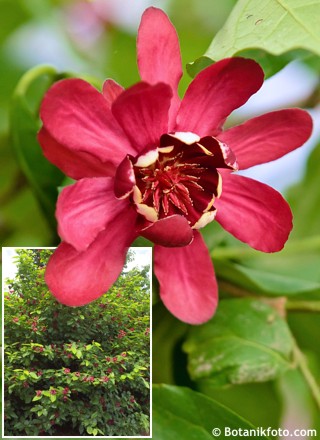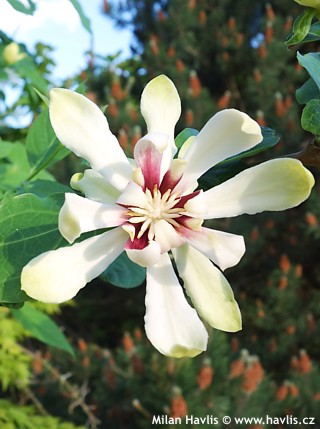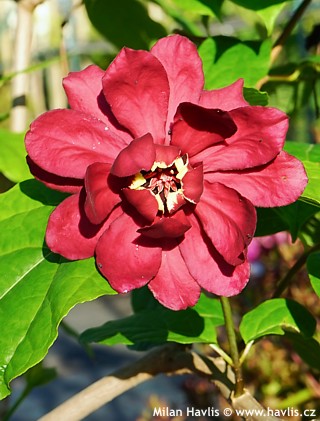Calycanthus floridus Carolina allspice, sweetshrub, strawberry shrub


Its epithet floridus is often erroneously connected to Florida but it means floriferous. Still, in respect of its origin either translation could be considered acceptable because the state’s name etymology has a lot to do with flowers. From 1513, when the Spanish first landed there during their Easter celebration known as Pascua Florida – The Feast of Flowers, the state was simply called Florida.
Flowers on the species are 3-5 cm across, fully double, composed of numerous strap-shaped petals. Their colour varies with soil conditions and amount of everyday sunlight: it is deep maroon to deep purple or even crimson red. They come out from hot days of May which is usually mid May in CE climate and continue blooming until late June. They are sweetly scented releasing a strawberry to apple-like perfume. Pollinated flowers may be followed by unique seed capsules of green and purple colour in August/September.
Deciduous leaves are large, 12-15 cm long, broadly elliptic to ovate, acuminate, bright green and glossy, changing to yellow in autumn. The plant grows slowly to moderately into a dense shrub reaching slightly over 2 meters in maturity (15-20 years). Well-established plants naturally form handsome, dense and bushy shrubs.
The whole plant contains fragrant oils in all its parts. On the other hand, it also contains calycanthine, a toxin structurally similar to strychnine, therefore it is dangerous to animals, mostly ruminants. Humans would be endangered only if large doses of the plant were consumed or if calycanthine was isolated in its concentrated form. In the past dried bark was used in place of cinnamon without any side effects.
Sweetshrub comes from North American moist woodlands so it will require a moist (not wet) place in your garden, too. And preferably full sun for best results. We recommend spring pruning of young plants once or twice after planting to achieve a compact shape with regular habit, which the plant then holds without further care. Hardy to about -29 °C (USDA zone 5).
Last update 21-01-2008; 26-01-2022
Goods are shipped all over Europe. For Russia and U.K. and for further details please read about SHIPPING OPTIONS HERE.
Are you interested in a serious discount for orders NOV-FEB? Check your options here.
THE PRICES INCLUDE VAT of 15%. For quick conversion you can use 1 CZK = approx. 0.04 EUR
- STANDARD QUALITY - Plants of this group are 1st class quality with number of branches and overall density adequate to their size and age, considering they were container grown.
- DE LUXE QUALITY - This label guarantees a luxurious quality of manually selected plants that, compared to their height and age, are exceptionally dense and beautiful.
- EXTRA - These plants are usually mature and bigger specimens with exceptional overall appearance.
- STANDARD (as described in the plant form) means a tree with a trunk of 190-210 cm and a crown at the top, unless specified differently. The commercial size for trees is their girth measured in the height of 1m from ground.
- HOBBY - These plants are of the same quality as our standard-quality plants but younger and therefore cheaper.
- SHRUB - a woody plant with branches growing bushy from the ground level.
- HALF-STANDARD or MINI-STANDARD - a small tree with shorter trunk, its size is usually specified.
- FEATHERED - These are trees with branches growing already from the base of the trunk and up along the stem.
- GRASSES and PERENNIALS - Sizes given usually read the diameter of the pot or the clump, as specified.












